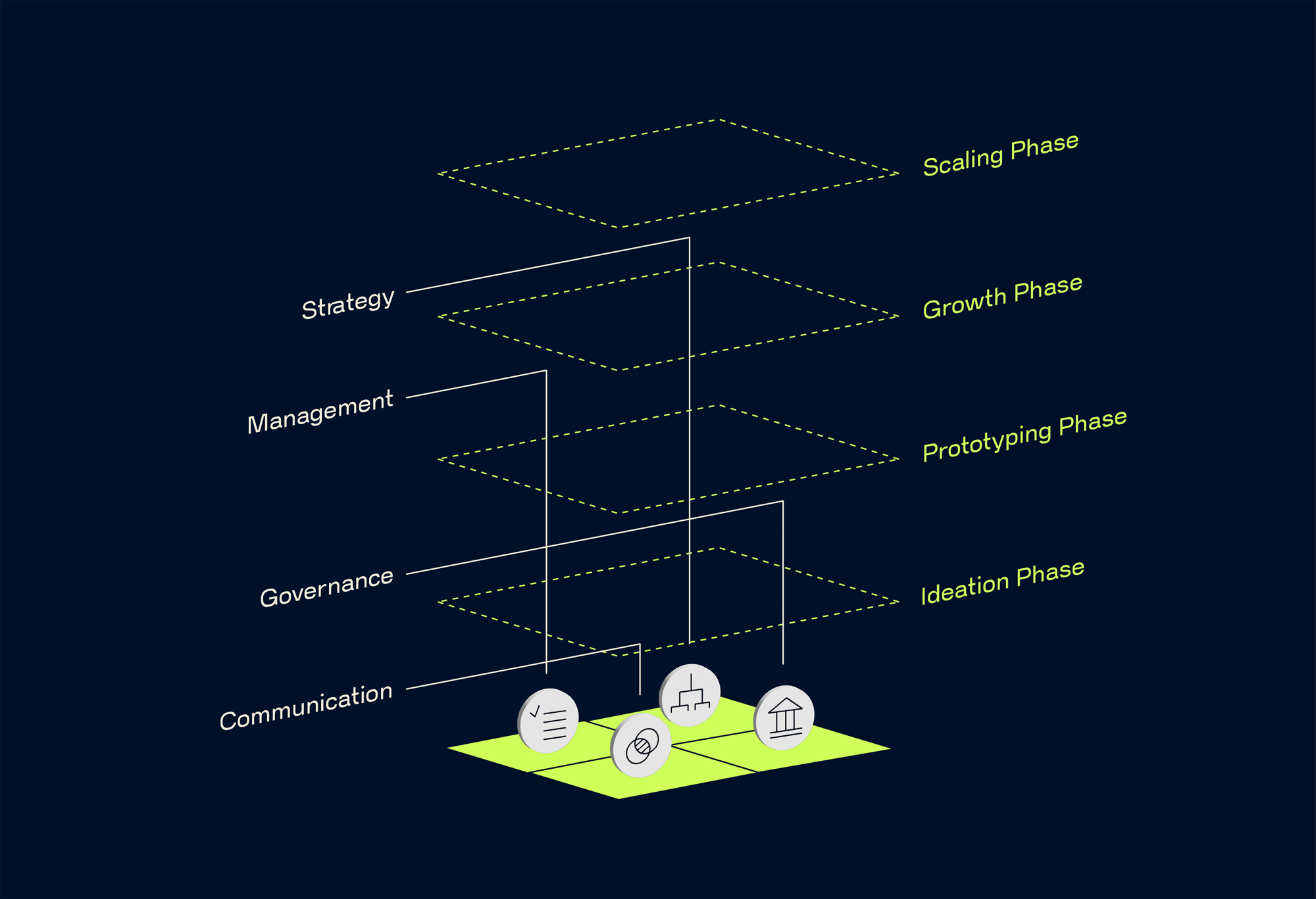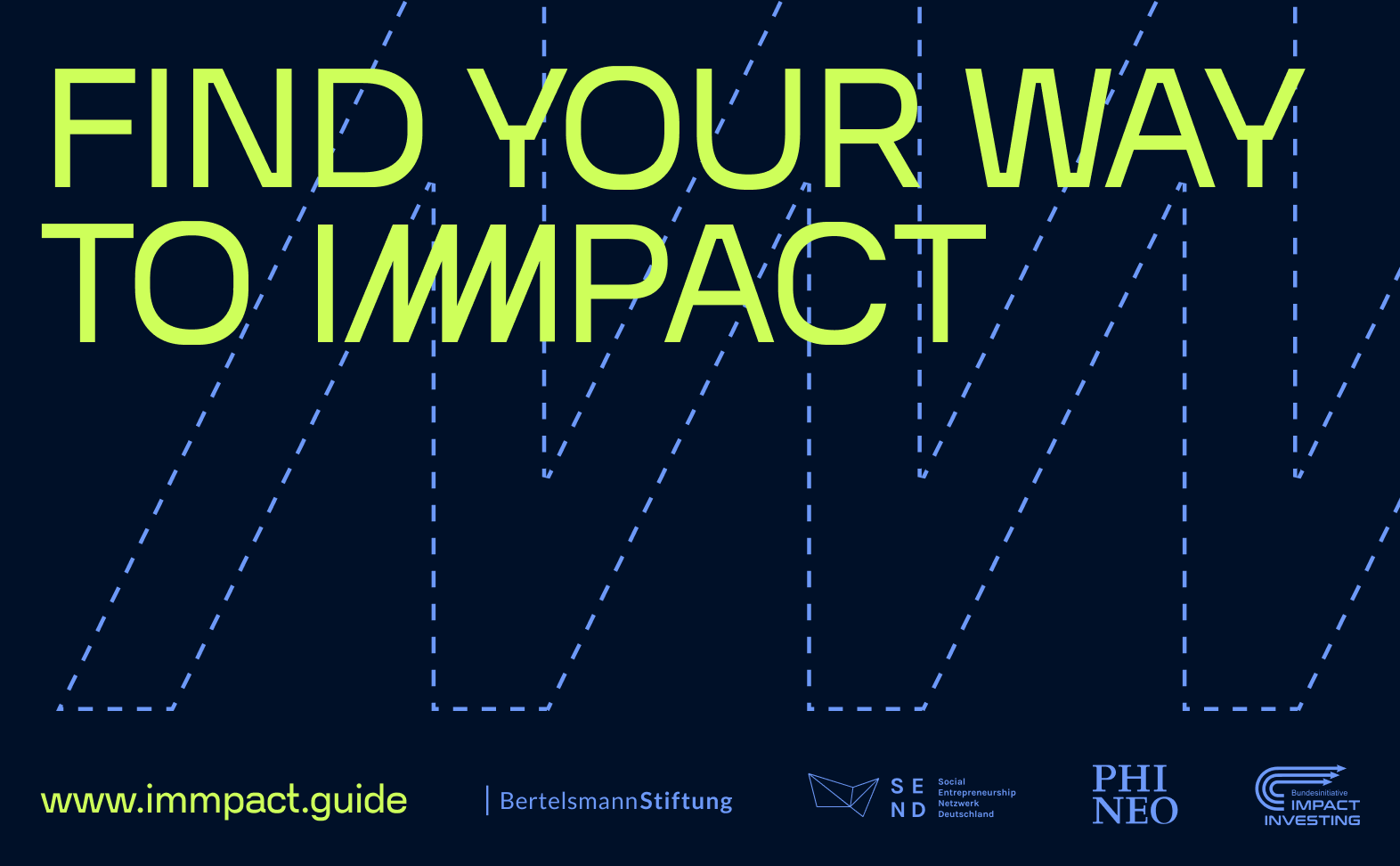Thomas Steiner | Senior Impact Manager, PHINEO gAG
Interview given to Ms Maria Louisa Vafiadaki
-What inspired you to develop the IMMPACT guide and what is its vision ?
As partners who have been active in this field for years, we are working together on the vision of shaping an impact economy in which the economy and financial markets act in an impact-oriented manner.
We, the Bertelsmann Foundation, the Federal Initiative for Impact Investing (BIII) and the Social Entrepreneurship Network (SEND) in Germany, and PHINEO, ask ourselves why Impact Measurement & Management (IMM) is still a topic that is neglected in many cases, despite many good frameworks and tools. And the problem lies in the many different frameworks and tools.
That is why we decided to develop a tool which gives an overview of what Impact Startups should do in different stages of their founding journey and what impact investors should look out for in startups regarding IMM.
-Your mission emphasizes a shared language in impact measurement and management. Why is that alignment critical among founders and investors ?
If you ask 50 people you will get 50 different answers about what impact is or could be. Without aligning the different perspectives and expectations the relationship between founders and investors can be difficult. Founders might believe that in addition to all their other important tasks in founding a company, they should now also do something for the investor. In contrast, investors could demand things from startups that they are not yet able to fulfill due to their obligations.
That is why a common language about impact is so important. It is important to have the same understanding of what impact is and what the various actors understand by it.
-Could you walk us through the core components of the Lean Impact model ?
Our Lean Impact Journey is inspired by Lean Startup (Eric Ries) and the book Lean Impact by Ann Mei Chang. With the build-measure-learn approach, founders should be able to implement their impact-oriented business models more quickly. A major benefit of this method is that it is user centric and puts the needs of the target groups and customers at the heart of every business.
The Lean Impact Journey accompanies founders throughout their entire journey, from a first idea to scaling their impact business. We provide methods, tips and good practice examples to integrate impact measurement and management in the business models from the early beginning. In this way, founders see that IMM is not an additional task, but an integral part of a successful impact business model.
-Which founder or investor profiles benefit most from IMMPACT and how is the guide used by investors and ecosystem builders to support impact-driven ventures ?
The IMMPACT Guide was especially developed for those who are already somehow active in any impact sector regardless of whether with social or ecological business models. But the content is designed in such a way, that even organizations that have not yet come into contact with IMM can use it easily.
Founders can use it as an self-assessment tool, answering the questions, what their status-quo is regarding their impact measurement and management, and how to proceed forward and what they can do. It can also be a communication tool to show stakeholders what has been achieved so far.
Impact Investors can use it to work on a roadmap together with their investees, to make the impact business model more robust. But it could also be used for their Impact Due Diligence and to compare different startups with each other.
-What are the common pitfalls founders face when first using the guide ?
At first glance, the IMMPACT Guide could be a little overwhelming. There is a lot of information and a lot of things to do. So, it could be easy to get lost.
But once the founders start using it, they get to work relatively quickly, as the tool only focuses on a few relevant features. We also integrated a side bar with tips if users should get stuck.
-You launched in collaboration with Bertelsmann Foundation, BIII and SEND. How has this partnership shaped the guide’s development ?
Aligning expectations, obligations and the language are a necessity to be impactful. Therefore, we made the joint decision that cooperation between the various stakeholder representatives would be much better than doing it on our own.
We also integrated the German impact ecosystem in the development phase, conducting interviews and collected feedback from potential users to make the best version for them. In this way, we were a startup ourselves and have oriented ourselves on the Lean Impact Journey.
Even if the process was strenuous and sometimes lengthy, we are now reaping the rewards – we get so much positive feedback on our work which motivates us to continue this path together. And I recommend everyone to do something very similar, especially startups and their (potential) investors.
-Looking ahead, what updates or enhancements do you envision for the IMMPACT Model Guide ? Are there plans to expand beyond Germany or integrate more advanced tools ?
We have different, smaller new features in the making. For example, we integrated a download function so you can use the data for other platforms or software.
Another feature will be a text box where users can record their notes or results. A bigger feature could be establishing an API interface so other software providers can integrate the Model into their solutions.
And we are currently working on integrating AI. So stay tuned!
Thank you.






